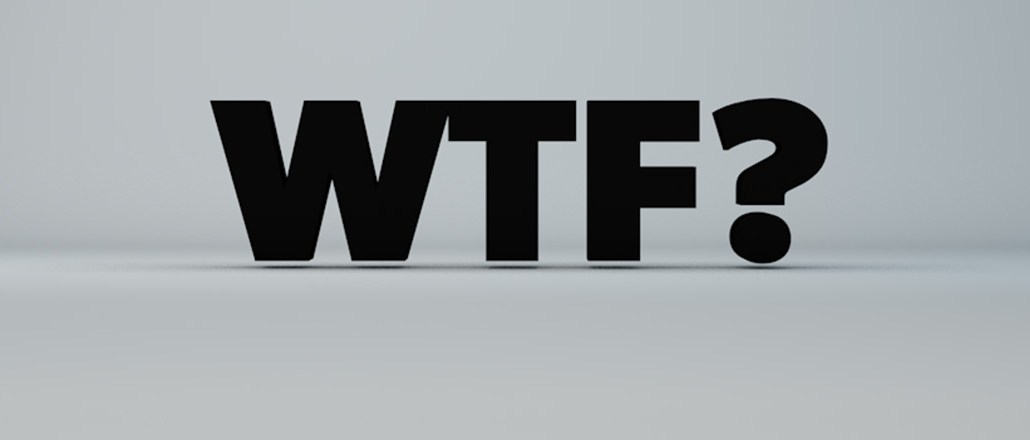Save 50% on a 3-month Digiday+ membership. Ends Dec 5.

This article is a WTF explainer, in which we break down media and marketing’s most confusing terms. More from the series →
Header bidding got a little sexier last week after Amazon announced it was flirting with wrapper tags.
While it was clear that Amazon’s announcement could have implications for publishers, it was less clear exactly how wrappers worked in the first place. They’ve been alleged to increase revenue and reduce page latency, but explanations haven’t always been comprehensible for ordinary humans.
Header bidding — the process by which publishers offer inventory to multiple ad exchanges simultaneously before making calls to their ad servers — was already confusing enough without this additional nuance. So let’s make some sense of it.
So WTF is it?
A header wrapper is a string of javascript that simultaneously collects multiple bid requests and responses before passing them through to an ad server, said Gabriel Dewitt, vp of technical operations at Index Exchange. The wrapper also collects various ad tech tags for services such as tracking, analytics and viewability that are implemented throughout a publisher’s webpage. The ad tech tags that the wrapper collects are then centrally hosted, typically through an external cloud-based service or a content delivery network.
OK, but why does that matter?
By collecting tags in one place, publishers can more easily manage and alter their tags.
“Without a wrapper, every time a publisher makes a change to a header tag, the ads person has to [manually] replace the old header tag with a new one,” said Jay Friedman, COO of programmatic company Goodway Group. “But if you have a wrapper, that provides with you with a portal where you place that code in one time, make sure it works, and then you can work in a separate interface to change code so that you are not messing with the actual page anymore.”
Wrappers also allow publishers to set some standards in their heading bidding. With a wrapper, publishers can adopt a “universal timeout,” which weeds out bidders who take too long to respond.
Ad position: web_incontent_pos1
What does a timeout have to do with anything?
A major criticism of header bidding is that every additional tag a publisher adds is a potential source of additional page latency. A universal timeout helps reduce this latency because it sets a ceiling on how long bidders have to respond before they are passed over.
For example, imagine a publisher with four header-bidding partners and a timeout of 100 milliseconds. The first three partners make their bids within 100 milliseconds, but the fourth makes its bid in 150 milliseconds. The first three partners have their bids passed along, but the fourth partner gets dumped for being too damn slow. By dumping slowpokes like the fourth partner, page latency is reduced.
A standard timeout also helps publishers by “exposing reporting analytics on which bidders are late more often than others,” said John Ellis, an engineer at Yieldbot.
So what’s the catch?
Developers of header wrappers insist that they increase revenue, reduce page latency and ease tag management. While those claims may be true, developers are also incentivized to tout their products.
Although several wrappers are free to use, some charge a fee. Aside from a potential additional cost, sources said that publishers may be weary of working with yet another third party to implement the wrappers. And there was some skepticism that even for free wrappers, there may come a fee down the road once publishers are ingrained in the habit of using wrappers. Another disincentive to adopting wrappers is driven by inertia.
Ad position: web_incontent_pos2
“Wrappers are very sticky,” said Heather Swarens, vp of Conversant. “Once a publisher integrates with a wrapper and spends resources setting up all configurations for each adapter, it would take a considerable amount of effort to swap that out.”
More in Media

What publishers are wishing for this holiday season: End AI scraping and determine AI-powered audience value
Publishers want a fair, structured, regulated AI environment and they also want to define what the next decade of audience metrics looks like.

Digiday+ Research Subscription Index 2025: Subscription strategies from Bloomberg, The New York Times, Vox and others
Digiday’s third annual Subscription Index examines and measures publishers’ subscription strategies to identify common approaches and key tactics among Bloomberg, The New York Times, Vox and others.

From lawsuits to lobbying: How publishers are fighting AI
We may be closing out 2025, but publishers aren’t retreating from the battle of AI search — some are escalating it, and they expect the fight to stretch deep into 2026.
Ad position: web_bfu




